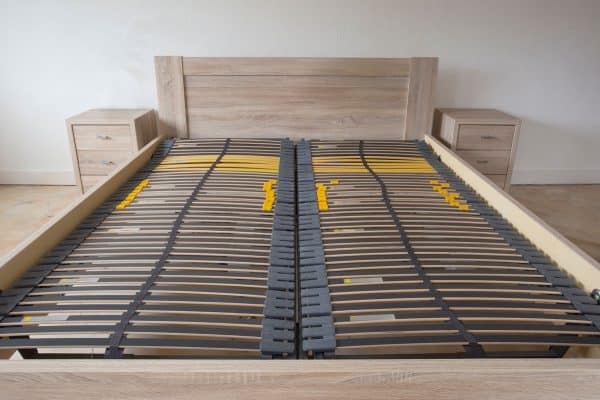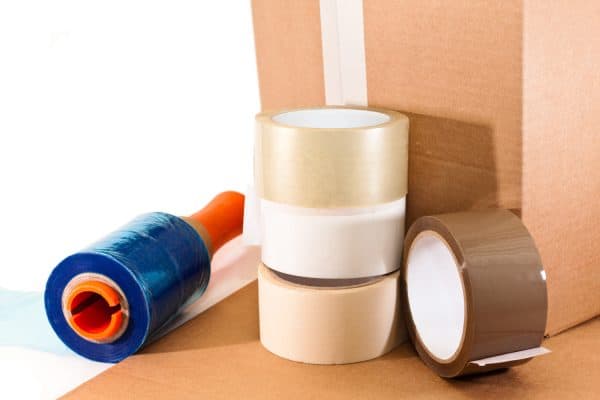Art paintings breathe life into any living space, so it's only natural to want to bring them to our new home. Moving paintings may sound complicated, but it doesn't have to take too much of your energy if you apply the best moving practices. So, how do you make sure your paintings remain intact during the move? We have searched for the most effective methods for you.
Here is how you can prepare and pack an acrylic painting for moving:
- Check the painting for signs of damage so you can fix it before the move.
- Line the floor with cardboard sheets and wax paper or glassine paper which you will use to pack the painting.
- Place the painting face-down. Wrap the wax paper around and secure it with packing tape.
- Make sure to tape every edge for added security.
- Cover the entire surface with bubble wrap.
- Pack the covered painting into a cardboard box and secure it with packing tape.
- Label the front and back parts with a marker and draw an arrow to indicate how you want the box to sit.
- If time permits, you can build a crate around the boxed painting. This is advisable if the acrylic painting is already fragile and old.
Paintings whether new or old hold sentimental value to their owners, which is why it is important to keep them safe while in transit. Fortunately, there are many tips and tricks you can apply that will make the process easier and less anxiety-inducing. If you want to learn more about how to pack paintings, keep reading below!

How to Safely Pack Your Acrylic Painting for Moving
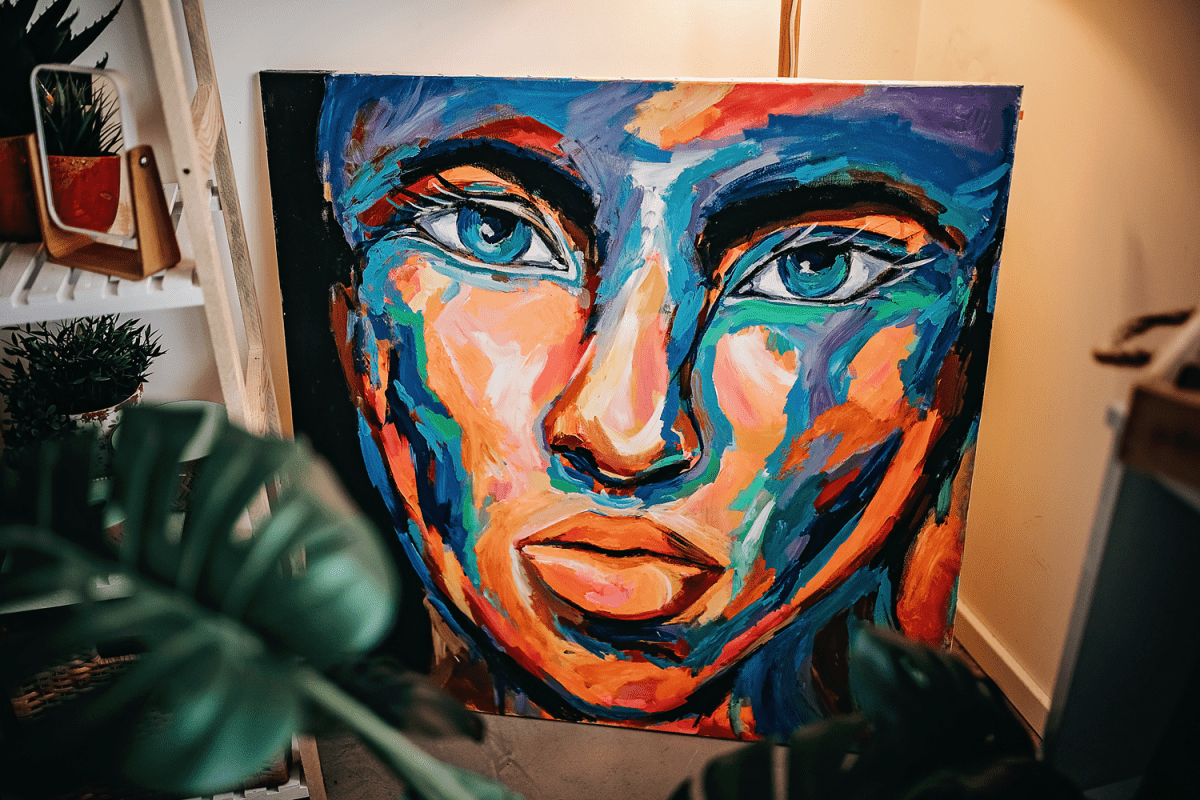
Paintings are considered fragile items, especially if they have sentimental value. Here is how you can efficiently transport your acrylic paintings.
Check the Painting for Damage
Before taking down the acrylic painting, check first if anything might fall off if you carry it down. Check also to make sure if the painting itself is waterproof.
If the painting is framed, create an "X" form across the surface using masking tape. This will act as a buffer between the glass and the painting in case the glass frame crashes.
Line the Floor with Cardboard Sheets and Wax Paper or Glassine Paper
Never let the painting have direct contact with any surface. You will need to line the floor with either a blanket or cardboard before you layer it with glassine paper so the painting won't have any scratches.
Make sure the padding you use is clean since it will be touching the painting; you don't want any dirt marring the artwork.
Use glassine paper since it can protect the acrylic painting from moisture damage. Wax paper can be an alternative, but it could stick to the painting--you will need to be careful removing it later.
Make sure you have enough area to work with. Placing the painting in a cramped space may cause you to accidentally stumble over it, which could create damage to the painting.
Check out this glassine paper on Amazon
Place the Painting Face-down
Gently place the painting face-down. This will ensure that the picture itself can be adequately wrapped without any gaps. Don't apply pressure on it; it may mar the picture.
Once it is positioned properly, wrap the glassine or wax paper around it. Leave 2 inches of the paper on either side.
Tape Every Edge for Added Security
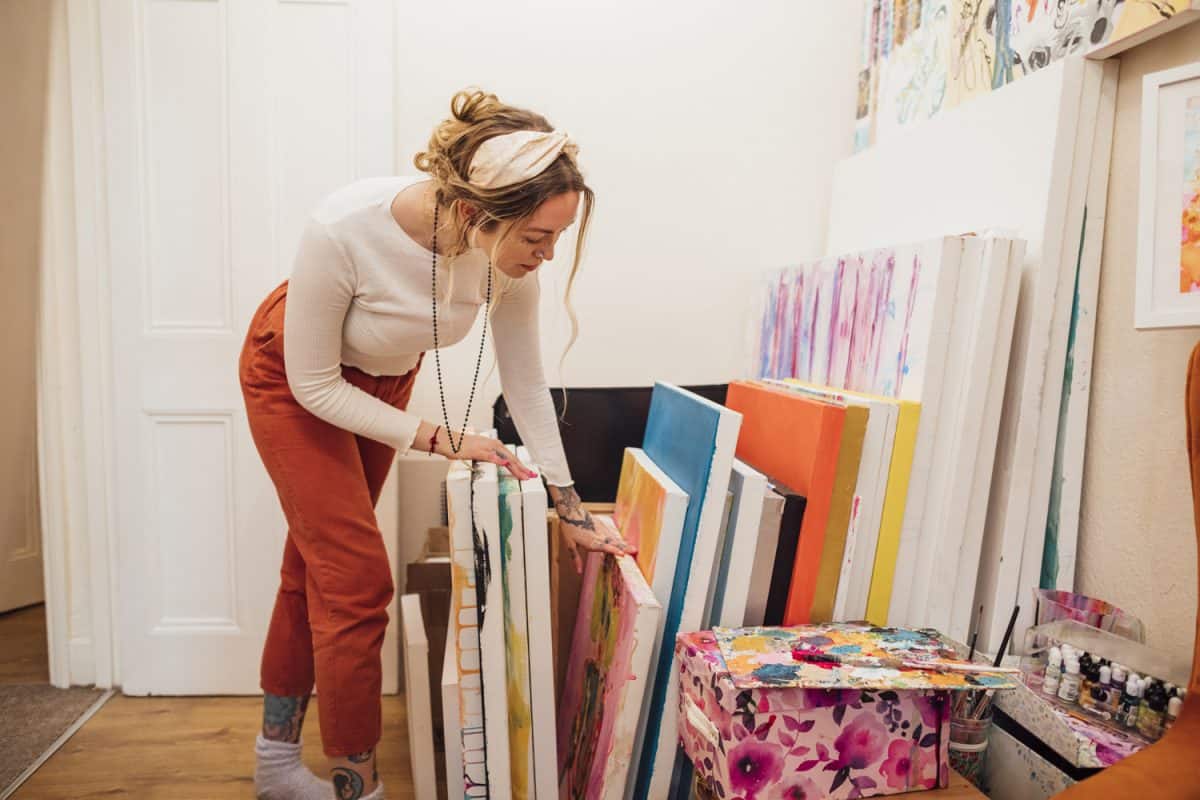
Tape all the sides where there are gaps or folds. You need to use an artist tape to tape the entire canvas so it will not be leaving residues later on. You can also use this tape on any canvas or painting if you have more in your house.
If you don't have artist tape, don't try to use an ordinary tape as an alternative--it can leave marks that could ruin the picture and the frame. Run to the nearest shop and the artist's tape.
You need to make sure that there aren't any gaps or untaped corners since the moisture from outside can seep in and damage the painting.
Check out this artist tape on Amazon
Cover the Entire Surface with Bubble Wrap
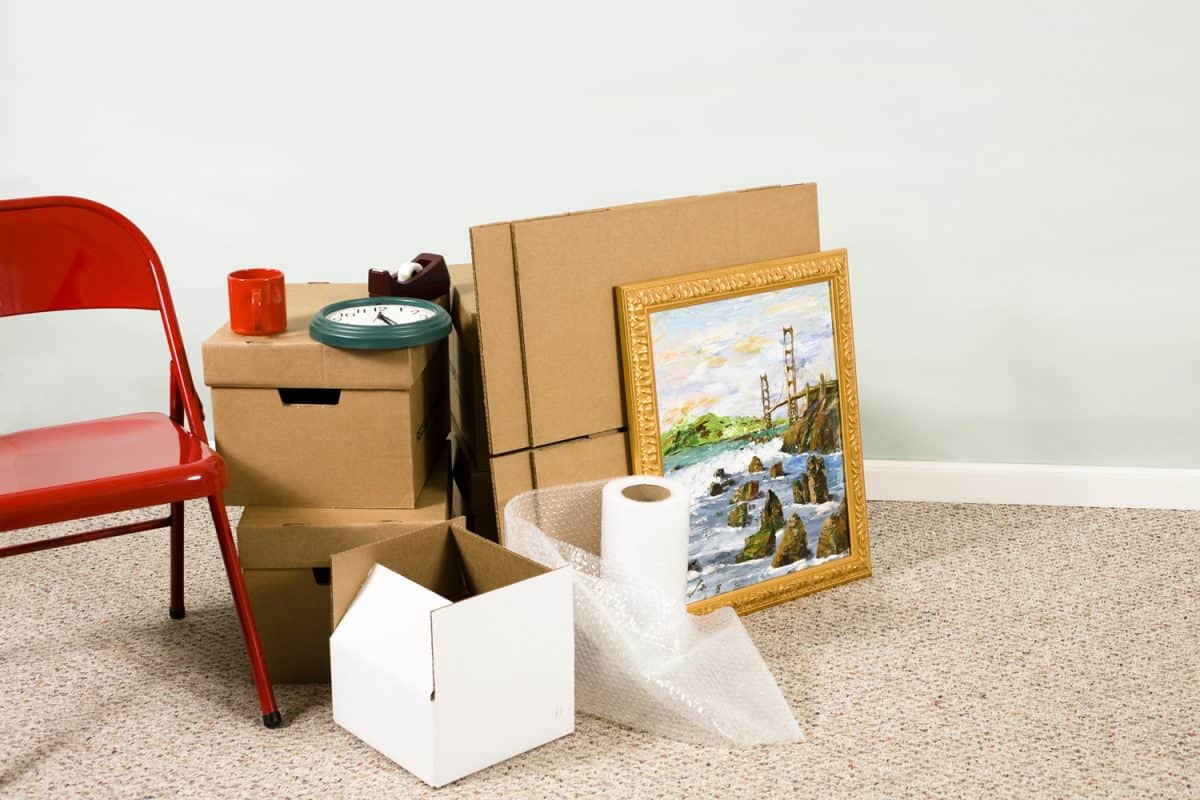
Wrap the painting with bubble wrap for cushioning and added protection. Use packaging tape to make the wrap fully adhere.
It could act as an insulating material too since acrylic paintings can be sensitive to temperature: if it is too hot, the sheets--especially wax paper--could stick to the painting and mess up the picture. If it's too cold, the painting can expand and contract, resulting in cracking.
Though the moving truck should make sure that everything is transported safely, you should still do whatever you can to protect your painting. The bubble wrap is a layer of protection that could give you peace of mind.
Slip Silica Gel Packs Inside
Since acrylic paintings--or any painting--can be sensitive to moisture, make sure to slip some dehumidifying packets behind the glassine paper. This will ensure that your painting remains clean and dry during transit.
Pack Into a Cardboard Box and Secure with Packing Tape
Make sure your cardboard box has enough allowance through which you can put on another layer of cushioning. Do not cram more than one painting into one box--it should be one box per painting unless it's a custom box used to transport multiple paintings at once.
You can cut out cardboard and place one on each side of the box to protect the painting's corners. Just cut out two strips of cardboard that matches the painting's dimensions.
Label the Front and Back Parts
Use a dark marker and clearly label each part of the box. Mark the box with "front", "back", and "sides" to inform the movers about their appropriate position. You can draw an arrow marked with "this side up" too.
Make sure to mark the box with "Fragile" so the movers would be more careful in handling them. If the paintings are priceless, you can get insurance for them--you can't put a price on peace of mind!
If you want an easier unpacking process, you can label each box with what painting is inside them too.
Build a Crate Around the Boxed Painting.
Having a shipping crate gives your painting maximum protection. This may be necessary if the painting is fragile and needs to be shipped overseas or cross-country--you can't simply rely on a cardboard box for that distance.
Make sure to build a crate that has enough allowance for added cushioning. You can't have too much cushion for priceless paintings!
Read: Types Of Storage Bins, Boxes, And Containers [20 Versatile Options!]
Should You Transport the Painting Stretched or Unstretched?

Some people prefer to ship their paintings rolled--or unstretched. While this is space-saving and cost-efficient, the painting may break during the there-stretching process especially if it is old and fragile. The overlying canvas fibers may also mix together, weakening its structure.
Stretched canvas, or paintings that are boxed as is, can be more expensive and difficult to handle. You will also need to account for every corner that can potentially encounter an impact while in transit.
If the painting is old and fragile, shipping it stretched is your best option. Newer acrylic paintings can be rolled since they dry very quickly, but you need to account for possible consequences.
Final Thoughts
Pieces of art need to be transported safely, so make sure to pack them with enough cushion until you are satisfied and have the box taped securely. Hire a reputable moving company and inquire about insurance terms if you must.
If you want to know more about packing for a move, check out the article "How To Pack Empty Plant Pots For Moving."



